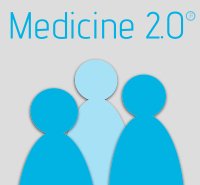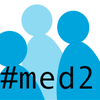Internet Use among Mothers of Young Children in Norway – a Survey of Internet Habits and Perceived Parental Self-Efficacy regarding Child Health and the Caring for a Sick Child.
|
If you are the presenter of this abstract (or if you cite this abstract in a talk or on a poster), please show the QR code in your slide or poster (QR code contains this URL). |
Abstract
Background: Internet has become the leading source of child health information to parents, and mothers of young children are among the most active users of the web. Perceived parental competence, education and satisfaction with health services may influence Internet use.
Objective: To evaluate how Norwegian mothers of young children make use of the Internet in general, and how they collect information about child health, especially when their child is sick. We also wanted to look at perceived parental self-efficacy, ability of self-care and empowerment concerning sickness in their child and how these factors would influence Internet usage.
Methods: A survey that included 99 Norwegian mothers to young children was performed to assess the relationship between Internet use concerning child health, perceived parental self-efficacy and empowerment when having a sick child, and demographic factors.
Results: Nearly all Norwegian parents have Internet access at home and use the net regularly, also when their child is sick. They mostly use Google to search for web-based child health information and are generally satisfied with the information that they get online. Internet is the main source for obtaining information about child health in general, while the parents use the traditional health services when their child gets sick. Internet usage was negatively correlated to mother’s education, but not to mother’s age, number of children or degree of satisfaction with the traditional health services. A third of mothers reported that they got very anxious and nearly half reported lack of knowledge when their child was sick.
Conclusion: Internet is the main source of child health information for Norwegian mothers of young children, and the usage is mainly independent of age, parental self-efficacy and degree of satisfaction with traditional health services. The traditional health services should act in conjunction with this to stimulate self-care and to increase parental self-efficacy and empowerment.
Objective: To evaluate how Norwegian mothers of young children make use of the Internet in general, and how they collect information about child health, especially when their child is sick. We also wanted to look at perceived parental self-efficacy, ability of self-care and empowerment concerning sickness in their child and how these factors would influence Internet usage.
Methods: A survey that included 99 Norwegian mothers to young children was performed to assess the relationship between Internet use concerning child health, perceived parental self-efficacy and empowerment when having a sick child, and demographic factors.
Results: Nearly all Norwegian parents have Internet access at home and use the net regularly, also when their child is sick. They mostly use Google to search for web-based child health information and are generally satisfied with the information that they get online. Internet is the main source for obtaining information about child health in general, while the parents use the traditional health services when their child gets sick. Internet usage was negatively correlated to mother’s education, but not to mother’s age, number of children or degree of satisfaction with the traditional health services. A third of mothers reported that they got very anxious and nearly half reported lack of knowledge when their child was sick.
Conclusion: Internet is the main source of child health information for Norwegian mothers of young children, and the usage is mainly independent of age, parental self-efficacy and degree of satisfaction with traditional health services. The traditional health services should act in conjunction with this to stimulate self-care and to increase parental self-efficacy and empowerment.
Medicine 2.0® is happy to support and promote other conferences and workshops in this area. Contact us to produce, disseminate and promote your conference or workshop under this label and in this event series. In addition, we are always looking for hosts of future World Congresses. Medicine 2.0® is a registered trademark of JMIR Publications Inc., the leading academic ehealth publisher.

This work is licensed under a Creative Commons Attribution 3.0 License.




